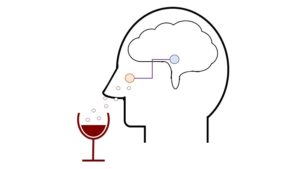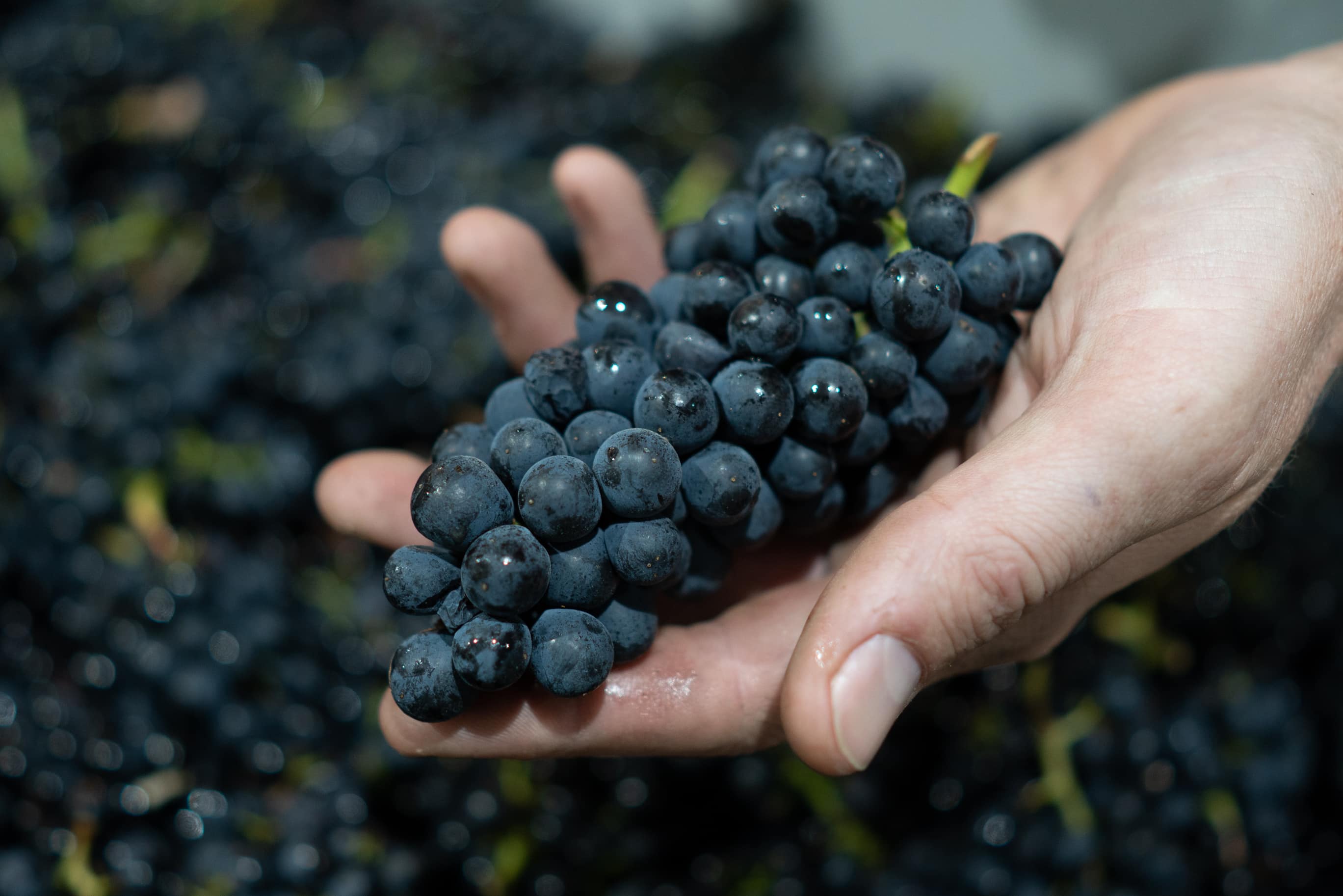What happens when we swirl and sniff our wine? What is the nose telling the brain? How does biology perceive chemistry? How does chemistry become joy?
“At some point during evolution, Humans became bipedal and developed a great sense of smell. We had to, as we now were further from the floor where most of the smelly things are.” explained Prof. Stuart Firenstein from Columbia University, NY, during his keynote talk at the wine science conference OENO/IVAS 2019 in Bordeaux late June.
Prof. Firenstein is the Chair of Columbia University’s Department of Biological Sciences. His team studies olfactory receptor neurons as a model for investigating how chemicals, such as wine aroma compounds, exert their influence in the brain and nervous system.

Figure 1: Wine aroma molecules enter through the nose and react with olfactory receptors in the olfactory bulb (orange), which connects to the cortex (blue).
When we are enjoying a nice glass of Sauv or Pinot, the olfactory neurons deep in our nose get activated by the different aroma compounds in the wine. These then relay a message to the brain cortex (the highest level of brain tissue) through electrical impulses (Figure 1). This happens in a series of two relay steps called a synapse, and it involves two neurons: the olfactory neuron (which perceived the smell), and a relay neuron called a mitral neuron, which then processes the information, and relays to the cortex. “The simplicity of this is something quite unique in neurobiology”, says Firenstein, and is what makes olfactory neurobiology special, in that “it has this very immediate access to the brain.” As a comparison, the other senses – visual, taste, touch and hearing-, have very different wiring. They can have anywhere from 4 to 9 neuron relays, and then the message ends up going to a completely different portion of the brain called the thalamus, which then processes and reconstructs what was perceived.
Because there is less processing involved in the sense of smell, Firenstein hypothesizes that the olfactory neuron is uniquely suited for the detection and discrimination of aromas.
Wine aroma is made up of a very large diversity of small organic molecules, with not so much in common, other than the fact that they are small. Specifically, less than 350 Daltons in mass.
The addition or subtraction of a single atom can give very different odour perception (Figure 2). Even something as small as aromas with different stereochemistry/chirality (how the carbon atoms are arranged) seems to be important and can be differentiated by our brain (Figure 3). And then some compounds smell the same but have extremely different chemical structures (Figure 4). How does it all come together?

Figure 2: The addition of a carbon can turn hexanal (left – cut grass aroma) to heptanal (right – strong fruity aroma).

Figure 3: The molecule on the left smells of grapefruit and the one on the right has been described as ‘woody, spicy”. The only difference is the direction of one carbon bond pointing either up or down.

Figure 4: The molecule on the left and on the right, though they have very different chemistries, both smell like musk, a strong fragrance used in perfumes.
“All aroma compounds bind to odour receptors in olfactory neurons” continues Firenstein. “There are over 500 receptors in humans.” Furthermore, each receptor has a slightly different configuration and therefore a slightly different affinity for bonding with any given aroma molecule, and “only one receptor is expressed per olfactory neuron at any given time”. Meaning each olfactory neuron is unique.
And, if that wasn’t complicated enough, Firenstein describes that the relationship between receptors and aroma molecules is not one to one (i.e.: >500 receptors does not mean we can differentiate >500 different aromas). Some receptors can be activated by one aroma molecule, some by several aroma molecules at the same time, and sometimes even the same aroma molecules can activate several different receptors (albeit with different efficiency). This was observed in the laboratory by Firenstein and others when studying the effect of aroma mixtures on mouse olfactory neuron cell activation.
“Aroma mixtures, like wine, are complex. A single odour can activate a cell, but a mix may not. Some specific mixes have no effect on neuron activation, others inhibit it, and others even enhance it.” continued Firenstein.
And it was this last part that got a room full of 300 wine scientists at the conference all excited. If these observations are real, then it could mean that volatiles chemicals compounds found in wine, which have either no described aroma description, or even foul aroma molecules, could be playing a very important role in how overall wine aroma is perceived (the wine bouquet – as the French would say).
Everything we know about wine aroma is based on finding and understanding how specific volatile aroma compounds are made, what they smell like, and then learning to either manipulate the vine or fermentation process to make more or less of them. But what if this is the wrong approach? What if wine likeability cannot be boiled down to simply one or two specific aroma compounds, but actually the right combination and balance of several? What if certain smells could only come about by allowing the production and accumulation of certain faults, like hydrogen sulphide? What if certain “inconsequential” volatiles produced during fermentation, which have been dismissed in the past due to their lack of smell, are really enhancing the perception of important aroma notes (or inhibiting others).
What is true is that the search for specific quality chemical markers in wine remains elusive (ie molecules in wine whose presence or absence can predict consumer acceptance). Understanding the neurobiology of how we smell and taste wine, as Firenstein and others have shown, is just as important as every other piece of this puzzle.
Dr. Matias Kinzurik is a Research Programme Manager at the Bragato Research Institute in New Zealand. He manages the Pinot noir Programme, a 5-year wine research programme looking at further understanding Pinot noir wine quality, and how it can be produced at high yields. This programme is co-funded by New Zealand Winegrowers and the Ministry of Business, Innovation and Employment.

















